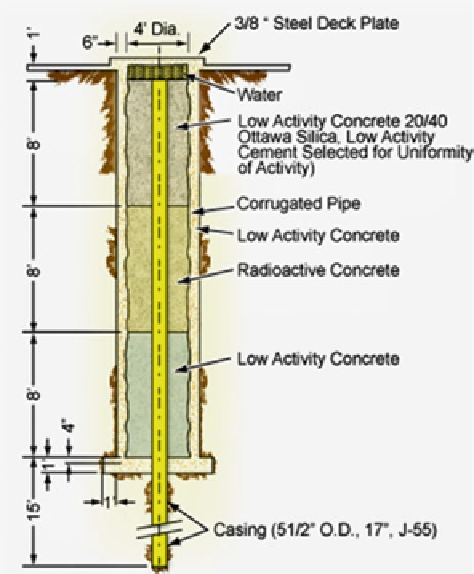Environmental Engineering Reference
In-Depth Information
Calibration of Gamma Ray Detectors and Logs
One of the problems of gamma ray logging is the choice of a standard calibration
system, since all logging companies use counters of different sizes and shapes
encased in steel housings with varying characteristics. On very old logs, the scale
might be quoted in micrograms of radium per ton of formation. For many reasons
this was found to be an unsatisfactory method of calibration for gamma ray logs, so
an API standard was devised. A test pit (installed at the University of Houston)
contains an “artificial shale,” as illustrated in Fig.
11.6
. A cylindrical artificial well,
4 ft in diameter and 24 ft deep contains a central 8-ft section consisting of cement
mixed with 13-ppm Uranium, 24 ppm Thorium, and 4 % Potassium. On either side
of this central section are 8-ft sections of neat Portland cement. This sandwich is
cased with 5½″, J55 casing. The API standard defines the difference in gamma ray
count rate between the neat cement and the radioactively doped cement as 200 API
units. Any logging service company may place its gamma ray tool in this pit to
make a calibration. Field calibration is performed using a portable jig that contains
a radioactive pill. The pill typically might be a low activity radium 226 source (e.g.,
0.1 milli-curie). When placed at a known radial distance from the center of the
gamma ray detector, it produces a known increase over the background count rate.
This increase is equivalent to a known number of API units, depending on the tool
type and size and the counter it encloses.
Fig. 11.6
API Gamma Ray
Test Pit at the University of
Houston

Search WWH ::

Custom Search